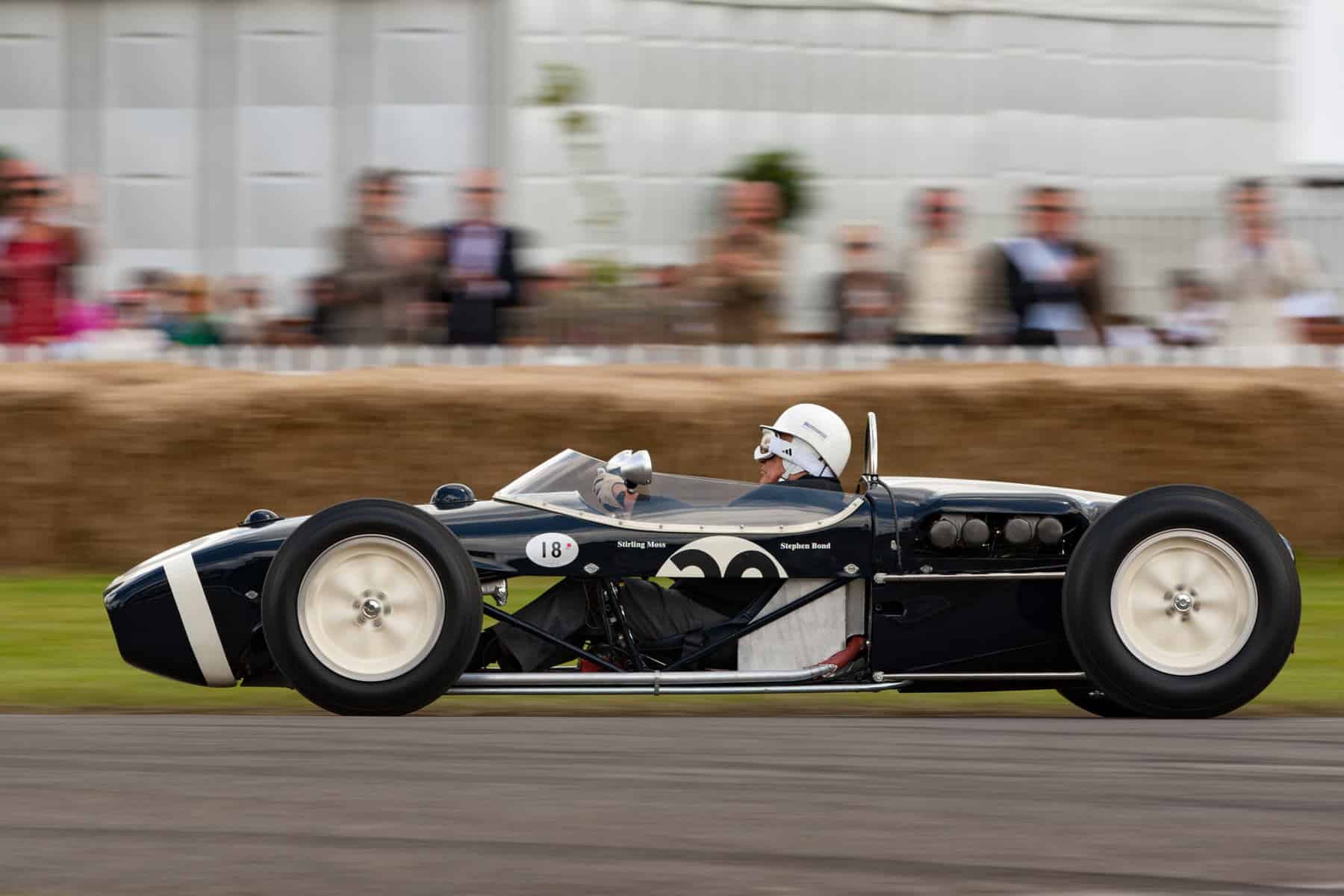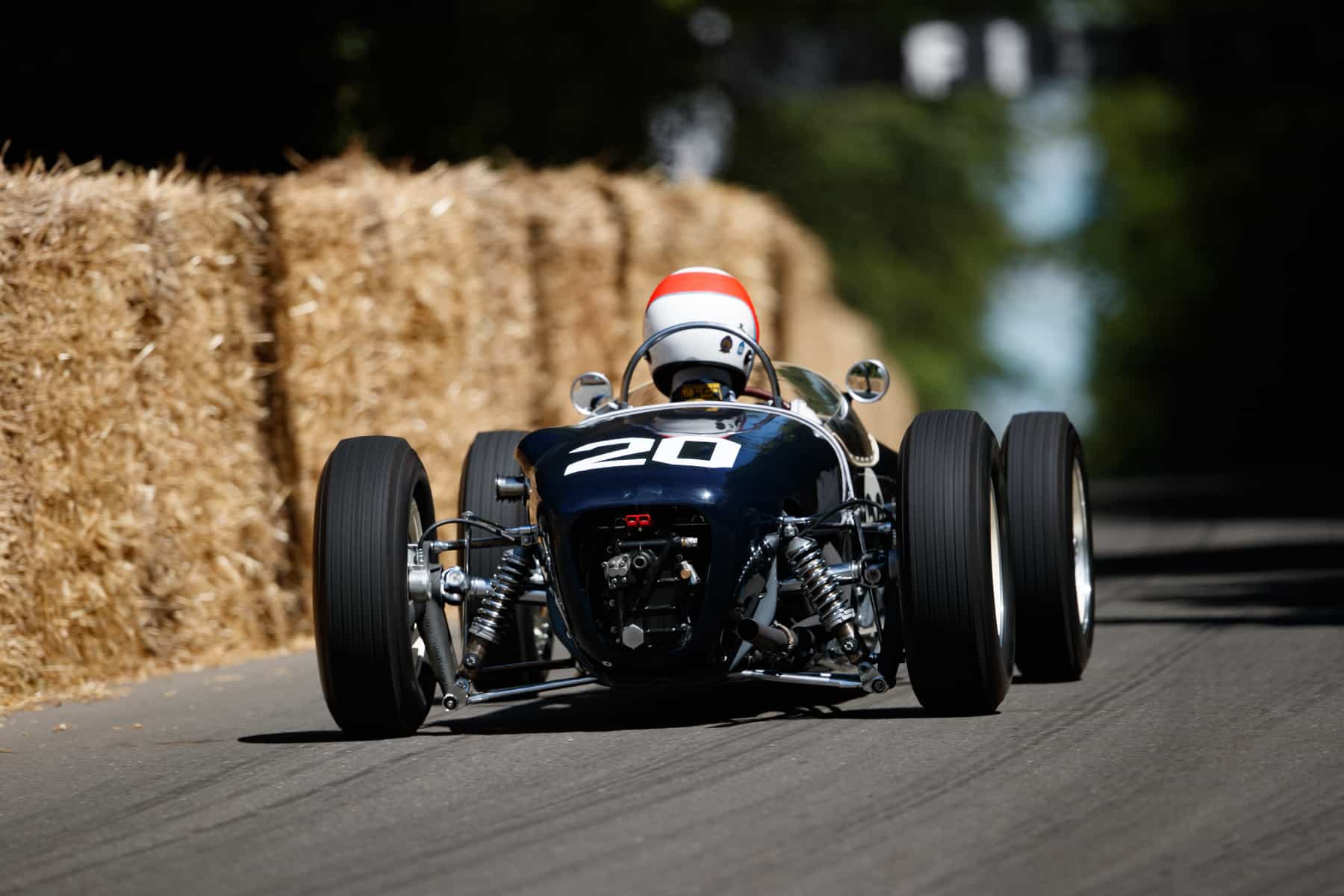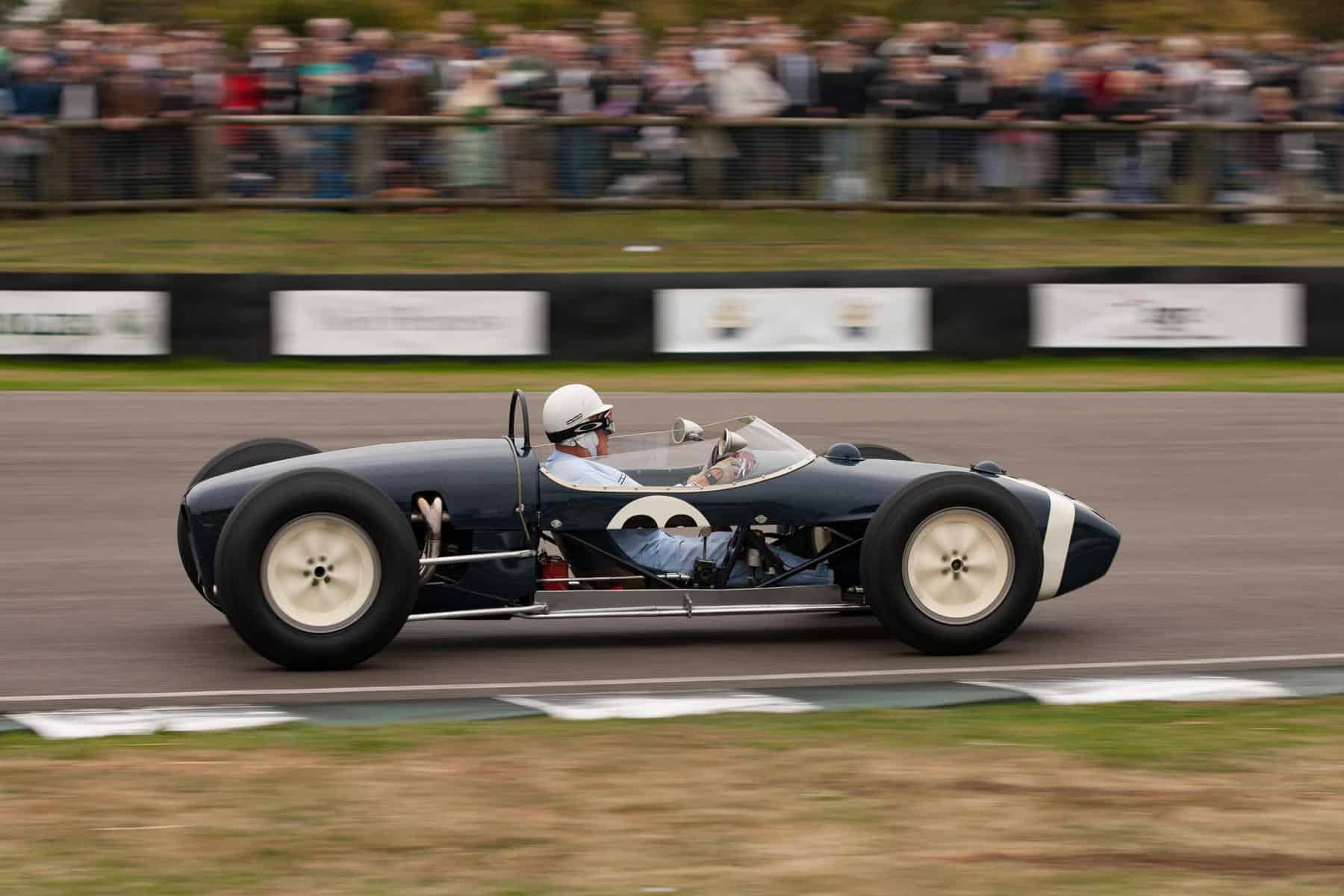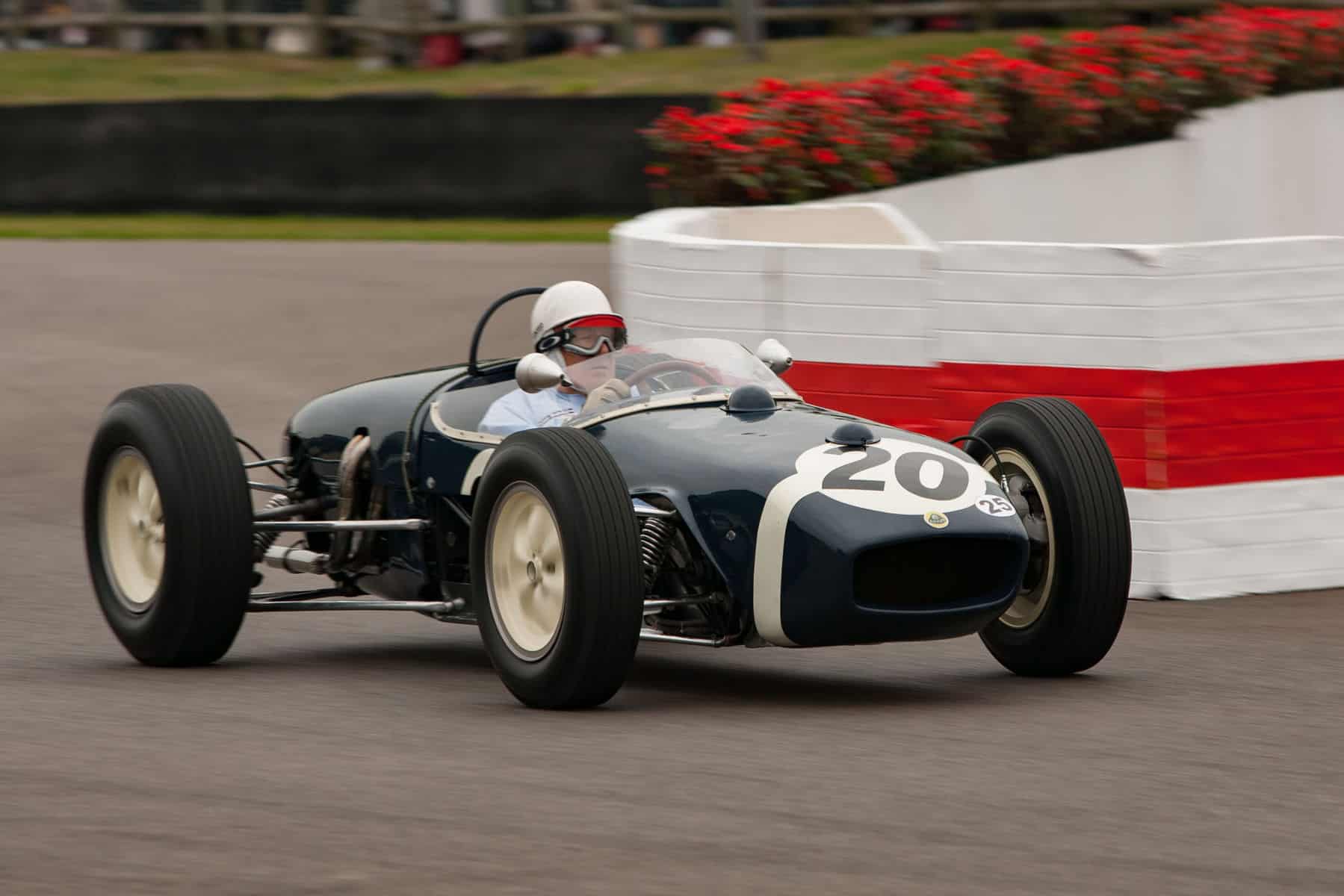Stirling Moss’ Greatest Race
What made the 1961 Monaco GP so special?
BY: WOUTER MELISSEN
On April 12 of this year, Sir Stirling Moss, one of motorsport’s greatest legends, passed away. Winner of 212 of the 529 races he started, including sixteen victories in sixty-six Formula 1 Grands Prix starts, Moss himself ranked the win in the 1961 Monaco Grand Prix as his greatest F1 drive of all, claiming the win despite running a year-old car with an underpowered engine for a privateer team. In honor of the late Sir Stirling Moss, we take a look at just why this race was so memorable.
It was perhaps surprising that Moss was in this position in the first place, considering he had been runner-up in the Formula 1 World Championship four times and was generally considered the fastest of all Grand Prix racers. Chalk it up to Moss’ characteristic loyalty – this time to the privateer R.R.C. Walker Racing team, whose head, Rob Walker, had given Moss a ride after the Vanwall team had withdrawn from Grand Prix racing ahead of the 1959 season. (Moss also enjoyed racing the more experimental British Cooper and Lotus racing cars that the Walker team fielded.)
Moss’ first Grand Prix for Walker Racing was the 1958 Argentinean Grand Prix. He was in the privately entered machine, since the factory Vanwall team that he had signed for to race that year had opted to sit out the overseas season opener. Walker Racing fielded a mid-engined Cooper for Moss, which was powered by the largest Coventry Climax available at the time. Displacing just under two liters, the four-cylinder was still well short of the 2.5-liter limit. Defying the odds, Moss won the race and scored the first Grand Prix victory for a mid-engined car.
Having won three more Grands Prix in 1958 for Vanwall, Moss ended the year second in the championship for a fourth year in a row. He returned to Walker Racing to compete in the latest Cooper, which now featured the latest Coventry Climax FPF. The engine had grown to the meet the displacement limit. In the championship, he was beaten by Jack Brabham, who drove the works Cooper to the World Championship, and Tony Brooks in a Ferrari that still had its engine mounted ahead of the driver. For the 1960 season, Moss was back with Walker to race the Cooper once more.

That was until the Goodwood Easter Meeting early in the season. Here Moss was comprehensively beaten by Innes Ireland with the all-new Lotus Type 18. The Scottish driver had already finished second with the new Lotus in the season opening Argentinean Grand Prix and then went on to score the manufacturer’s first Formula 2 win with a 1.5-liter version of the Type 18 at Oulton Park. At Goodwood, Ireland showed that this had not been a fluke, as he scored victories in both the F2 and F1 races. Walker immediately ordered a Type 18 for Moss.
The Type 18 was the first mid-engined Lotus competition car built by Lotus. It replaced the Type 16, which had originally been designed as an F2 car but also competed in F1 races. Lotus founder Colin Chapman originally opted to go for a mid-engined design to make a competitive car in the new Formula Junior class. Powered by diminutive, production-based engines, efficiency was key for the FJ cars. Chapman figured this could only be achieved by moving the engine behind the driver. To recoup the considerable investment, Lotus would offer the Type 18 in both F1 and FJ versions.
Like the Type 16 before it, the new Lotus single seater was built around a space frame chassis constructed from steel tubes. While following the same basic design, the chassis built for the Formula Junior Type 18 used a thinner gauge steel for the tubing to save some weight. While the F1 cars were fitted with Girling disc brakes, the Junior racer was fitted with more affordable drum brakes. The front suspension was through double wishbones. At the rear, there no longer was room for the relatively tall “Chapman strut.” Instead, it consisted of lower links, trailing arms, and fixed-length drive shafts.
Mounted behind the driver was the familiar Coventry Climax FPF four-cylinder. This was famously based on an engine originally designed to drive the water pump in a firetruck. First used in 1956, the FPF was a pure racing engine and featured an aluminum head with twin overhead camshafts. By increasing the size of the block, it finally grew to meet the Formula 1 displacement limit during the 1958 season. A further evolution was introduced in 1960, which had a slightly longer stroke. In this guise, the FPF produced a very competitive 239 hp.
The Coventry Climax engine was mated to the proprietary Lotus five-speed gearbox. Nicknamed the “Queerbox,” this was effectively an adapted version of the sequential gearbox found on motorcycles. Even on the front-engined Lotus single seaters, it was mounted in unit with the final drive. Compared with conventional gearboxes, it was relatively light and it was also so compact that the rear disc brakes could be mounted in-board. Unfortunately, the Queerbox was also notoriously unreliable, suffering from regular final drive and gear selection failures.
Thanks to the mid-engine layout, there no longer was a need to run a propellor shaft underneath or alongside the driver. This allowed for a considerably lower profile. Stubby and square, the Type 18 body nevertheless did not look quite as efficient as it actually was. The shape of the body was a reflection of the chassis and actually had a relatively small front area. The original Type 18 Junior prototype was fitted with aluminum panels but the subsequent FJ and F1 cars sported a full glassfiber reinforced plastic body. The lightweight machine did not exceed 450 kg even in F1 trim.
The R.R.C. Walker Racing Team took delivery of its new Lotus Type 18 one week before the 1960 edition of the Monaco Grand Prix. There was just enough time to paint the car in the team’s familiar dark blue with a white stripe across the nose. Just like the Coopers Moss raced during the previous seasons, the new Lotus was prepared by Alf Francis. He had been a longtime personal mechanic of Moss during his many privateer endeavors in the early 1950s. Having followed Moss to Walker Racing, he was now the team’s chief mechanic.
With the paint barely dry, Moss immediately managed to qualify his new Grand Prix racer on pole position at Monaco, comfortably outpacing three Coopers. The race was not quite as straightforward with BRM’s Jo Bonnier grabbing the lead and Jack Brabham in a Cooper also managing to get ahead of Moss. It was a close battle between the three until Jack Brabham hit the wall, having just grabbed the lead. Bonnier was out shortly thereafter with a suspension failure. Moss had a mostly trouble-free run and grabbed his second win at the Principality.
Moss was on pole again for the subsequent Dutch Grand Prix. Third fastest, Innes Ireland in the works Lotus Type 18 also started on the first row. In the race, the Walker Racing Lotus was damaged after Jack Brabham’s Cooper threw up a curb. Despite requiring a lengthy repair, Moss managed to finish fourth. He was clearly in top form and gelling well with the new Lotus. Sadly, he lost all momentum in practice for the Belgian Grand Prix at Spa. One of the rear axles failed, which saw Moss thrown out of the car in the ensuing crash. The British driver was sidelined with two broken legs.
Including the Belgian Grand Prix, Moss was forced to miss three Grands Prix. He was back behind the wheel at the Portuguese Grand Prix where he was disqualified due to driving on track in the wrong direction after a spin. Like the other British teams, Walker Racing opted to boycott the Italian Grand Prix. Now fully recovered, Moss did race at the final round of the World Championship at Riverside. He qualified on pole position and won the race handily. From his four starts, Moss won two Grands Prix in the Type 18, while the factory Lotus team drivers scored none.
Moss was clearly on top of his game again and he was certainly one of the favorites for the 1961 season. The sport’s governing body threw a spanner in the works for all British teams by pushing through a profound regulation change. For all intents and purposes, the rule set that had been in place for Formula 2 was adopted for Formula 1. Most crucially, the displacement limit was lowered from 2,500 cc to 1,500 cc. The British teams and engine builder Coventry Climax had not expected that it would get this far. As a result, no competitive engine was ready for the start of the season.
Coventry Climax quickly reworked the F2 variant of the FPF engine, bringing it right up to the displacement limit by slightly increasing the stroke. Dubbed the FPF Mk II, it produced a modest 151 hp but was the only option for all British teams including Walker Racing. It was mounted in a new Type 18 with chassis number 912. Alf Francis used his connections in Italy to source a Colotti five-speed gearbox to replace the troublesome Queerbox that was fitted as standard. Although more reliable, it was also larger, which meant that the rear disc brakes had to be moved outboard.
The one team and engine manufacturer that was ready for the new regulations was Ferrari. The Italians had already developed an all-new V6 engine to use in F2. The design was further refined for the 1961 with a very wide V-angle. It produced an impressive 190 hp at 9,500 rpm. Just a few years earlier Enzo Ferrari had famously explained that a mid-engine layout was only for those manufacturers that could not built a proper engine. He had, however, finally come to accept reality and the Ferrari 156 F1 developed for the 1961 indeed had the engine installed behind the driver.
Nicknamed the “Sharknose” for the striking air-intake, the new Ferrari was the clear favorite going into the season opener. In 1961, this was the prestigious Monaco Grand Prix. Walker Racing not only brought the team’s new Lotus Type 18 for Moss to race but also had a Cooper available as a spare. Moss actually tried both cars in practice as he felt the Lotus was really tough to drive fast compared with the more driver-friendly Cooper, particularly around the demanding Monaco circuit. In the end, Moss opted to enter the Type 18 in qualifying as it was considerably faster than the Cooper.
Against all odds, Moss actually managed to beat Ferrari’s Richie Ginther in qualifying, and a young Jim Clark was third in a works Lotus Type 21. As he was expecting a very difficult race, Moss decided to remove the Type 18’s side panels for some additional cooling. Ginther used his surplus in horsepower to grab the lead from the line. By lap fourteen, Moss managed to get ahead again. For the remainder of the race, Ginther and Moss swapped fastest lap times. Eventually both went almost three seconds faster than the pole position time. Moss held on to the lead and crossed the line first after two hours and forty-five minutes of grueling racing.
During the remainder of the season, the British played catch-up, with Coventry Climax and BRM both creating V8 engines. Moss soldiered on with the four-cylinder Type 18 that was updated with several bits from the new Type 21. In this hybrid Type 18/21 guise, it proved successful once again at the German Grand Prix, where Moss scored the first non-Ferrari win in four races. After four Grand Prix wins for Walker Racing, Team Lotus finally snatched its first victory at the season finale at Watkins Glen with Innes Ireland at the wheel.
Having competed for a privateer team for three seasons with far more success than he should have been capable of on paper, Moss was in the running to join the Ferrari works team in 1962. Sadly, it was not to be, as he suffered a career-ending accident with a Lotus at Goodwood early in the season. Walker Racing continued to field Grand Prix cars and fittingly, it was a dark blue Lotus 49B Cosworth that was driven to the very last Formula 1 win for a privateer team with Jo Siffert behind the wheel at the 1968 British Grand Prix.
The Type 18 had very much been the car that established Lotus as a front-running contender in the Formula 1 World Championship. Not only was it very successful on track, it was also a huge sales success. In addition to the two dozen Grand Prix cars built, well over a hundred Formula Junior cars were built and sold to customers around the world.
For Rob Walker, the 1961 Monaco-winning Lotus Type 18 was simply an obsolete racing car and accordingly, it was sold on at the end of the season. Briefly campaigned by Count Volpi’s Scuderia Serenissima, it was retired shortly thereafter. Recognizing how important this car was, the late Tom Wheatcroft acquired chassis 912 in 1965 for his Donington Grand Prix Museum. Restored to its 1961 configuration, it was proudly displayed in the museum until Wheatcroft’s passing in 2009.
Not much later, it returned to the track in the hands of its subsequent owners. At the 2012 Goodwood Festival of Speed, Sir Stirling Moss was reunited with the car. Fittingly, it was run with the side panels removed. In 2019, this most important racing car was lovingly restored once more by Classic Team Lotus. With the 1960 car scrapped for spares in period, chassis 912 is the only ex-Moss, Monaco Grand Prix winning Type 18 extant.










